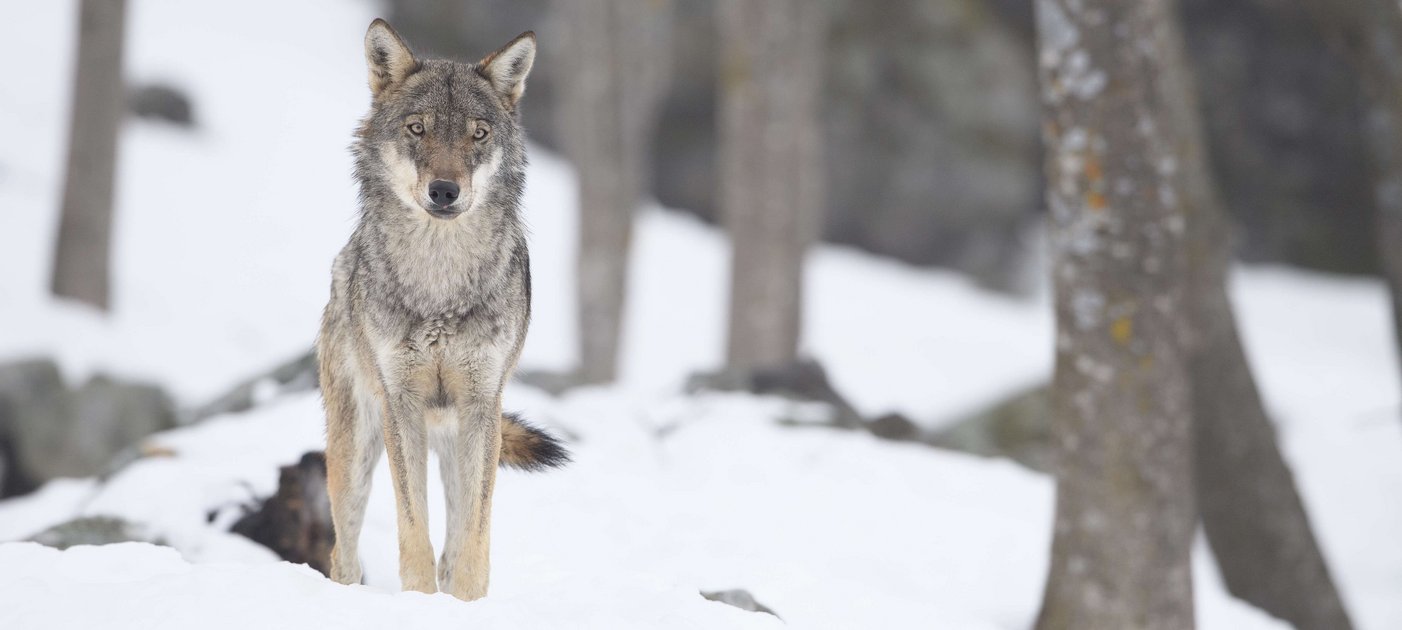Project countries: Austria, France, Italy, Slovenia
The situation in Austria
Wolves lived throughout Austria until about 150 years ago. Wolves were persecuted in Austria and exterminated in the mid-19th century due to conflicts with livestock farming, competition for game animals and a sometimes a perceived direct threat to humans. From then on until 2008, wolves appeared only occasionally. Since 2009 wolves have been migrating into Austria regularly from neighboring populations, since 2016 in increasing numbers. About 48% of Austria is covered by forest, and the country has the highest density of wild ungulates in Europe, so the overall habitat quality is good.
The wolves in Austria come from four different populations: Western and Southern Alps (Italy, France and Switzerland), Dinaric Mountains (Slovenia, Croatia), Carpathians (Slovakia) and Central European lowlands (Germany, western Poland and the Czech Republic).
The first pack was formed in 2016 at a military training area (Allentsteig). In the years that followed, there was one pack again in 2017, three packs in 2018 and 2019, and just one pack again in 2020.
Wolves in Austria have high turnover rates. The only exception are the parent wolves from the Allentsteig pack. In the period 2016-2019, individual wolves in the Alps could be detected for an average of 5 months through genetic evidence and 7 months if one includes all traces. The corresponding average residence times in the non-Alpine area are 5 and 13 months. The high turnover rates of individual wolves translate into a similar pattern for packs. Outside of the military training area, no wolf has remained for more than a year, and no pack had formed in the Alpine areas during this period. No Austrian offspring has ever been recorded outside of the respective pack area.
Public debate
A fierce public debate is taking place in Austria about the return of wolves. While the majority of Austrians are in favour, parts of society completely reject the return and demand wolf-free zones or even a wolf-free Austria. The most prominent among these groups are sheep keepers and hunters. Sheep farmers are very outspoken and open in the public debate. They argue that damage prevention measures are difficult or impossible to implement. Hunters are more restrained in the public debate, although many have a low acceptance of the wolf. The public can understand the fears of sheep farmers. Using taxpayers' money to help sheep farmers to prevent harm to their flocks is widely accepted. The hunters' point of view is less accepted, as the non-hunting public views their motivations as selfish self-interest.
Conservation and management
In order to deal with the return of the wolf in this difficult public context, the Austrian Provinces and two federal ministries founded an umbrella organization called the "Österreichzentrum Bär Wolf Luchs" (Austria Centre Bear Wolf Lynx) in early 2019. Interest groups and scientific institutions are extraordinary members. The idea of this organization is to support public administrations in dealing with the challenges within the legal framework, and to organize a low-conflict coexistence of large carnivores and humans, especially land users.
The wolf is listed in Annexes II and IV of the EU Habitats Directive and is therefore strictly protected. The implementation of harm prevention measures and other measures to support the coexistence of wolves and humans is at a very early stage in Austria.
General goals of the LIFE WOLFALPS EU Project
Im Projekt LIFE WOLFALPS EU (2019-2024) ist das ultimative Ziel, das Zusammenleben von Wolf und Mensch zu verbessern. Zum ersten Mal werden auf der Ebene der alpinen Wolfspopulation koordinierte Maßnahmen im gesamten alpinen Ökosystem umgesetzt werden. Das beinhaltet sowohl Regionen, in denen der Wolf seit 20 Jahren präsent ist (Westalpen), als auch Regionen, in denen der Wiederbesiedlungsprozess gerade erst begonnen hat (Ostalpen).
Monitoring, Management und Schutz der Wölfe auf Populationsebene in den Alpen
The main goal of the project is to overcome the current divergent strategies of wolf management (both at local and national levels) and to achieve comprehensive conservation, management and monitoring at population level for the first time in Europe. Measures must be transferrable and repeatable in order to have a homogeneous effect on a large scale. The project is building a close cross-border network of professionals, starting long-term cross-border monitoring and will provide high-quality population-level data on the wolves.
In a large number of actions, what drives the sources of conflict is examined and solutions are developed. Public attitudes towards wolves are surveyed and used for targeted educational and communication activities to increase knowledge about wolves and to promote coexistence.
Project leadership at the Research Institute of Wildlife Ecology
Further team member
General Project Coordination
Ente di Gestione delle Aree Protette delle Alpi Marittime, Validieri, Italien
Duration
01.09.2019-30.09.2024
(Further) Project Partners
Accademia Europea di Bolzano, Italien
Arma dei Carabinieri, Rom, Italien
Citta Metropolitana di Torino, Italien
Ente di Gestione delle Aree protette dell Alpi Cozie, Italien
Ente di Gestione dell Aree protette dell ´Appennino Piemontese, Italien
Ente di Gestione dell Aree protette dell'Ossola
Ente Parco Nazionale Dolomiti Bellunesi, Feltre Italien
Ente Regionale per i Servizi all''Agricoltura e alle Foreste, Milano, Italien
Höhere Bundeslehr- und Forschungsanstalt Raumberg-Gumpenstein, Österreich
MUSE - Museo delle Scienze, Italien
Office Francais de la Biodiversité, Frankreich
Parc National du Mercantour, Nice, Frankreich
Regione Autonoma della Valle d´Aosta, Aosta, Italien
Regione Liguria, Italien
Regione Lombardia, Milano, Italien
Univerza v Ljubljani, Ljubljana, Slowenien
Università degli Studi di Torino, Italien
Zavod za gozdove Slovenije, Ljubljana, Slowenien
Financed by
Bundesministerium für Nachhaltigkeit und Tourismus, Wien, Österreich
EU (European Commission), Brussels, European Union, Programme EU LIFE 2014-2020
